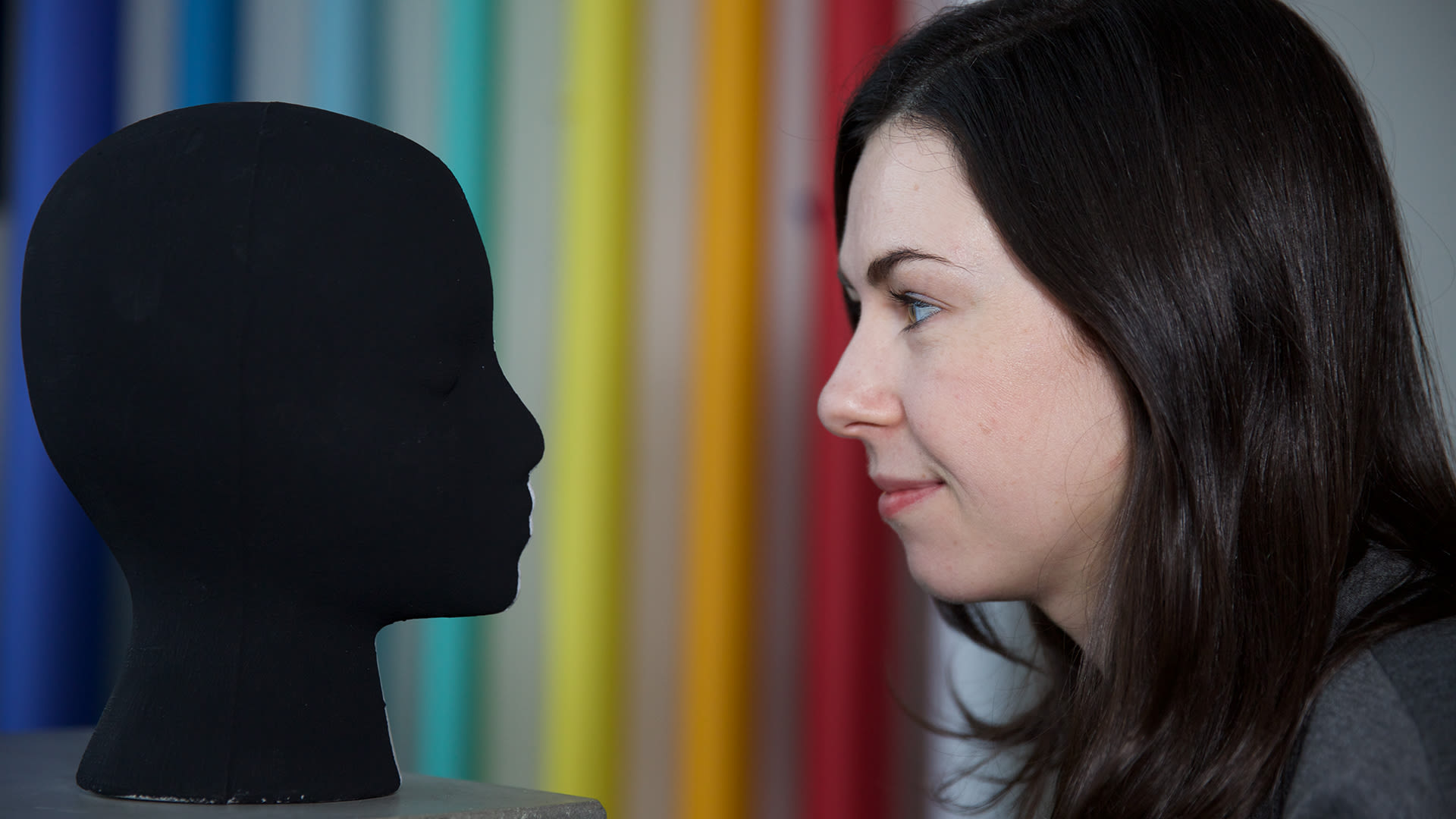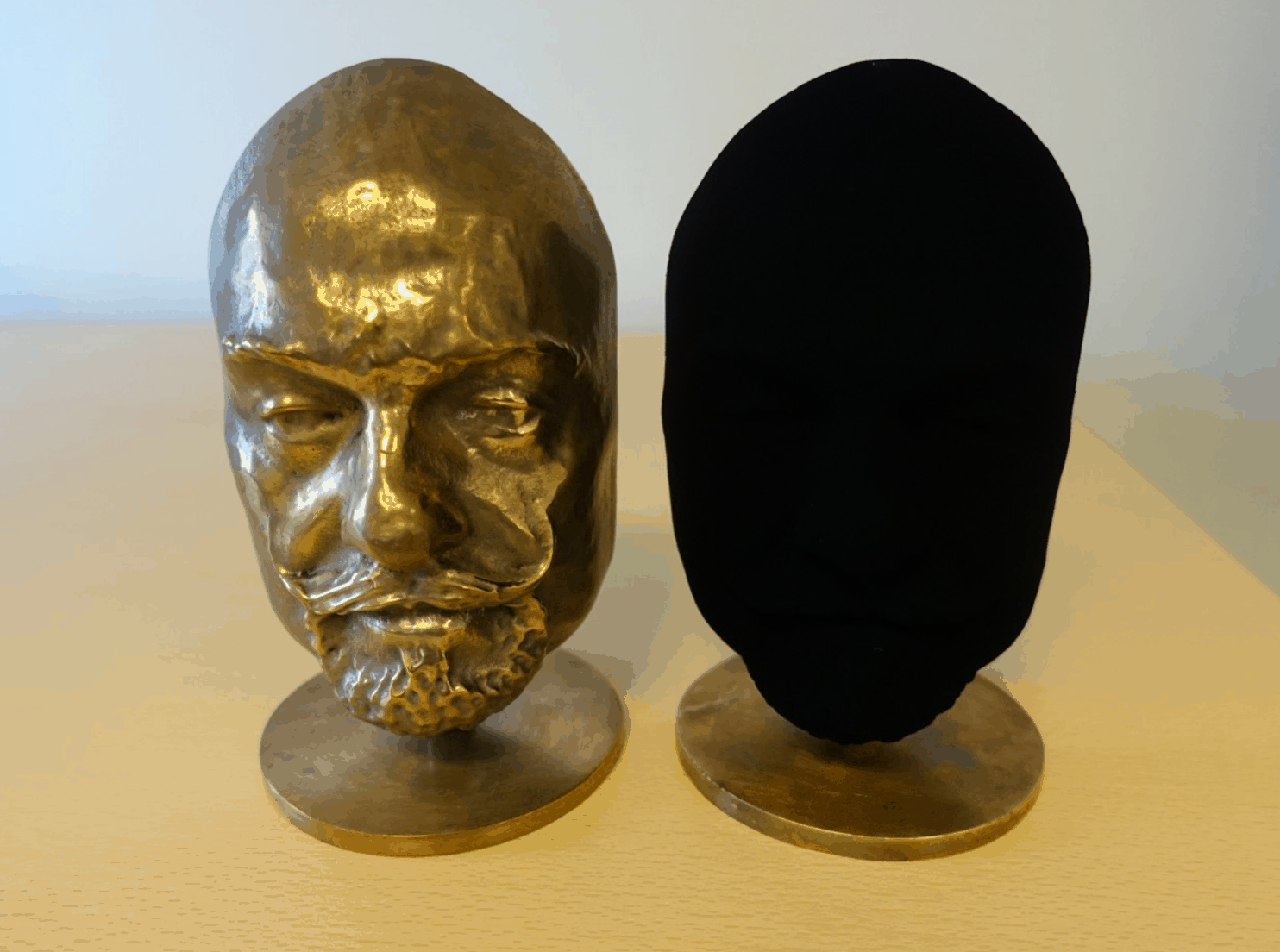Meet The World's Blackest Man: A Story That Challenges Perception And Celebrates Diversity
Have you ever heard of the world's blackest man? If not, buckle up because we're diving into an incredible story that will make you rethink how you view skin tone and diversity. This isn't just about skin color; it's about embracing who we are and celebrating the uniqueness of every individual. The world's blackest man has become a symbol of self-acceptance and pride in one's heritage.
Picture this: a man whose skin is so dark it almost looks like velvet. No, I'm not exaggerating. This is the reality for the world's blackest man, whose melanin levels have sparked global curiosity. His story is more than just a scientific phenomenon; it's a testament to the beauty of human diversity. In a world where people often focus on differences, this man's journey teaches us to celebrate those differences instead.
Before we dive deeper, let's address the elephant in the room. Why does this story matter? Well, it's not just about the "world's blackest man" title. It's about challenging societal norms and encouraging people to see beyond surface-level differences. In today's world, stories like these can inspire others to embrace their true selves and appreciate the beauty in diversity. So, let's get started, shall we?
Who Is the World's Blackest Man?
Let's start with the basics. The title of "world's blackest man" belongs to a gentleman named **Kenyatta Cantwell**, a resident of Melbourne, Australia. Kenyatta's skin is so dark that it has earned him international recognition. But what makes his skin so unique? It all comes down to melanin, the pigment responsible for skin color. Kenyatta's melanin levels are off the charts, making his skin darker than most people's.
Now, you might be wondering, "Is this even possible?" Believe it or not, science backs it up. Kenyatta's condition is known as **hyperpigmentation**, where the skin produces excessive melanin. While this condition is rare, it's a fascinating example of how diverse human biology can be. So, what does it mean to be the world's blackest man? Keep reading to find out!
Biography: The Life of Kenyatta Cantwell
Before we explore the science behind Kenyatta's incredible skin, let's take a moment to learn more about the man behind the title. Below is a quick snapshot of Kenyatta's life:
Personal Information
| Name | Kenyatta Cantwell |
|---|---|
| Age | 37 years old |
| Occupation | Model and Advocate |
| Location | Melbourne, Australia |
| Hobbies | Photography, Traveling, and Spreading Awareness |
Kenyatta Cantwell is not just a man with extraordinary skin; he's also a passionate advocate for diversity and self-acceptance. Through his work as a model and public speaker, he has inspired countless individuals to embrace their uniqueness and celebrate their heritage.
What Makes Kenyatta's Skin So Unique?
Now, let's talk science. Kenyatta's skin is a result of a condition called **hyperpigmentation**, where the body produces an excessive amount of melanin. Melanin is the pigment that gives our skin its color, and while most people have varying levels of melanin, Kenyatta's levels are through the roof. This condition is rare, but it's not unheard of.
But here's the thing: Kenyatta's melanin levels aren't just high—they're record-breaking. Scientists have studied his skin and found that it reflects less than 0.02% of light, making it one of the darkest skin tones ever recorded. To put that into perspective, most people's skin reflects around 5-15% of light. Kenyatta's skin is so dark that it almost appears black even in bright sunlight.
How Does Hyperpigmentation Work?
Hyperpigmentation occurs when melanocytes, the cells responsible for producing melanin, go into overdrive. This can happen for a variety of reasons, including genetics, hormonal changes, and environmental factors. In Kenyatta's case, it's believed to be a combination of all three.
- Genetics: Kenyatta's family has a history of dark skin, which likely contributed to his condition.
- Hormones: Hormonal fluctuations can trigger melanin production, especially during puberty or pregnancy.
- Environment: Exposure to sunlight can increase melanin production, which might explain why Kenyatta's skin is so dark.
While hyperpigmentation is harmless, it can sometimes be associated with other skin conditions like melasma or post-inflammatory hyperpigmentation. However, in Kenyatta's case, his condition is purely cosmetic and doesn't affect his health.
Challenges Faced by the World's Blackest Man
Being the world's blackest man isn't all sunshine and rainbows. Kenyatta has faced his fair share of challenges, both physically and emotionally. Here are some of the obstacles he's encountered:
Physical Challenges
Kenyatta's dark skin can make it difficult for him to find makeup or skincare products that suit his needs. Many brands don't cater to darker skin tones, leaving him with limited options. Additionally, his skin is more prone to sun damage, so he has to be extra cautious when spending time outdoors.
Emotional Challenges
Let's not forget the emotional toll of being so unique. Kenyatta has faced discrimination and prejudice throughout his life, simply because of the color of his skin. People have stared, whispered, and even made derogatory comments about his appearance. But instead of letting it get to him, Kenyatta has used these experiences as fuel to inspire others.
The Science Behind Melanin
Melanin is the pigment that gives our skin, hair, and eyes their color. It's produced by specialized cells called melanocytes, which are found in the epidermis, the outermost layer of the skin. There are two main types of melanin:
- Eumelanin: Responsible for dark brown or black pigmentation.
- Pheomelanin: Responsible for red or yellow pigmentation.
In Kenyatta's case, his melanocytes produce an excessive amount of eumelanin, resulting in his incredibly dark skin tone. Scientists are still studying the exact mechanisms behind this phenomenon, but one thing is clear: Kenyatta's melanin levels are truly remarkable.
Celebrating Diversity Through Kenyatta's Story
Kenyatta's story is more than just a scientific curiosity; it's a celebration of diversity and self-acceptance. In a world where people often judge others based on their appearance, Kenyatta's journey serves as a powerful reminder that beauty comes in all shapes, sizes, and colors.
Through his work as a model and advocate, Kenyatta has inspired countless individuals to embrace their uniqueness. He frequently speaks at schools and community events, sharing his story and encouraging others to celebrate their differences. His message is simple yet powerful: "You are beautiful just the way you are."
Breaking Stereotypes: The Impact of Kenyatta's Story
Kenyatta's story has had a profound impact on how people view skin color and diversity. By sharing his experiences, he has helped break down stereotypes and challenge societal norms. Here are some of the ways his story has made a difference:
- Increased awareness about hyperpigmentation and other skin conditions.
- Encouraged conversations about diversity and inclusion.
- Inspired others to embrace their uniqueness and celebrate their heritage.
But Kenyatta's impact doesn't stop there. He has also worked with brands to promote diversity in advertising and media representation. By featuring models with diverse skin tones, these brands are helping to create a more inclusive world where everyone feels seen and valued.
Future Prospects for Kenyatta Cantwell
So, what's next for the world's blackest man? Kenyatta has big plans for the future. In addition to continuing his work as a model and advocate, he hopes to launch a skincare line specifically designed for people with darker skin tones. He also plans to expand his speaking engagements and reach even more people with his message of self-acceptance and diversity.
But Kenyatta's ambitions don't stop there. He dreams of creating a global movement that celebrates diversity and promotes inclusivity. By sharing his story and inspiring others to embrace their uniqueness, he hopes to create a world where everyone feels valued and respected.
Conclusion: Embrace Your Uniqueness
In conclusion, Kenyatta Cantwell's story is a powerful reminder that beauty comes in all shapes, sizes, and colors. As the world's blackest man, he has faced his share of challenges, but he has turned those challenges into opportunities to inspire others. Through his work as a model and advocate, Kenyatta has helped break down stereotypes and promote diversity and inclusion.
So, what can you do to celebrate diversity in your own life? Start by embracing your uniqueness and encouraging others to do the same. Share Kenyatta's story with your friends and family, and support brands that promote diversity and inclusivity. Together, we can create a world where everyone feels valued and respected.
Now it's your turn! Leave a comment below and let us know what you think about Kenyatta's story. How has it inspired you to celebrate diversity and embrace your uniqueness?
Table of Contents
- Who Is the World's Blackest Man?
- Biography: The Life of Kenyatta Cantwell
- What Makes Kenyatta's Skin So Unique?
- How Does Hyperpigmentation Work?
- Challenges Faced by the World's Blackest Man
- The Science Behind Melanin
- Celebrating Diversity Through Kenyatta's Story
- Breaking Stereotypes: The Impact of Kenyatta's Story
- Future Prospects for Kenyatta Cantwell
- Conclusion: Embrace Your Uniqueness

“Where are all the black people?” News College of the Arts

Watch Why Scientists and Artists Want The Blackest Substances on Earth

The Blackest Black & How Ventablack Got Adopted by Art